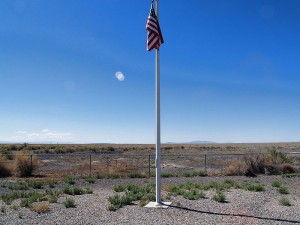 The Topaz Incarceration Camp in Utah will soon be the focus of a new museum that will tell the story of the 11,000 Japanese Americans imprisoned there during World War II, reports Nikkei West.
The Topaz Incarceration Camp in Utah will soon be the focus of a new museum that will tell the story of the 11,000 Japanese Americans imprisoned there during World War II, reports Nikkei West.
The museum which has been in the planning stages since 2008 is scheduled to open next year.
The building was completed in May of this year with the help of a $714,000 grant from the National Park Service Japanese American Confinement Sites Grant Program
The Topaz Museum Board recently received an additional $497,000 grant from the NPS that will be used to manufacture and install the exhibits.
Write ups that will go with the exhibitions are currently being drafted and the whole exhibition will go through a review process once it is completed.
The Museum is located in Delta, Utah about 16 miles from the camp. Many of the 11,000 prisoners at Topaz were from the San Francisco Bay Area, according to Wikipedia. It was surrounded by barbed wire and seven guard towers. It was dry and the area was prone to dust storms.
One of those imprisoned, Dave Tatsuno, smuggled a film camera into the camp and shot a documentary that was considered so culturally significant it was the second film in the country to be selected for preservation in the National Film Registry. The first was the Zapruder film of the John F Kennedy assassination.
Fred Korematsu who challenged the incarceration of Japanese Americans was also imprisoned there.
Topaz was also known as the Central Utah Relocation Center and Abraham Relocation Center.

RE: Plans in works for new museum at Topaz Incarceration camp: A brief clarification regarding the film “Topaz,” which was named to the Library of Congress National Film Registry in 1996. The film is not in finished documentary form such as you would see on TV or in the theater; it is a collection of film clips, without sound, captured secretly by Mr. Tatsuno while at the camp. Furthermore, it was the second *amateur* film selected to the Registry. The Zapruder film was the first amateur film or home movie named to the Registry. The Registry currently consists of 625 films, and 25 more will be added in December. They include Hollywood studio films, actuality footage such as “Topaz,” home movies, documentaries, experimental films, student films, and avant-garde films. For more information about the Registry, go to http://www.loc.gov/film/filmnfr.html.